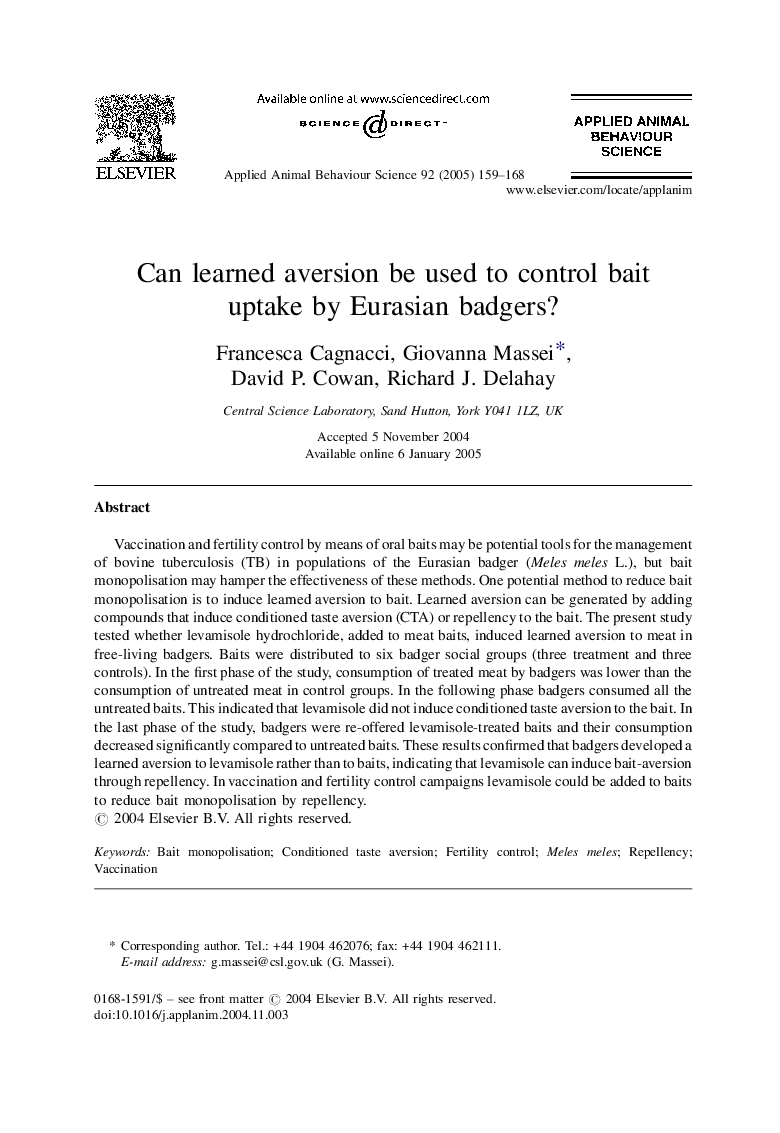| Article ID | Journal | Published Year | Pages | File Type |
|---|---|---|---|---|
| 9475976 | Applied Animal Behaviour Science | 2005 | 10 Pages |
Abstract
Vaccination and fertility control by means of oral baits may be potential tools for the management of bovine tuberculosis (TB) in populations of the Eurasian badger (Meles meles L.), but bait monopolisation may hamper the effectiveness of these methods. One potential method to reduce bait monopolisation is to induce learned aversion to bait. Learned aversion can be generated by adding compounds that induce conditioned taste aversion (CTA) or repellency to the bait. The present study tested whether levamisole hydrochloride, added to meat baits, induced learned aversion to meat in free-living badgers. Baits were distributed to six badger social groups (three treatment and three controls). In the first phase of the study, consumption of treated meat by badgers was lower than the consumption of untreated meat in control groups. In the following phase badgers consumed all the untreated baits. This indicated that levamisole did not induce conditioned taste aversion to the bait. In the last phase of the study, badgers were re-offered levamisole-treated baits and their consumption decreased significantly compared to untreated baits. These results confirmed that badgers developed a learned aversion to levamisole rather than to baits, indicating that levamisole can induce bait-aversion through repellency. In vaccination and fertility control campaigns levamisole could be added to baits to reduce bait monopolisation by repellency.
Related Topics
Life Sciences
Agricultural and Biological Sciences
Animal Science and Zoology
Authors
Francesca Cagnacci, Giovanna Massei, David P. Cowan, Richard J. Delahay,
